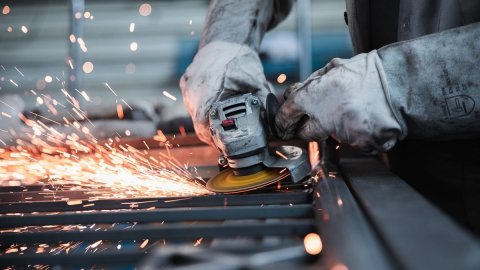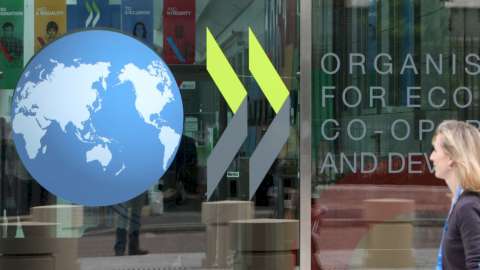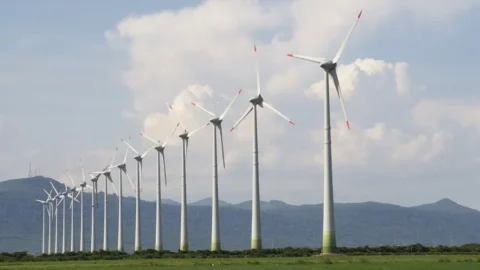The strong growth of Italian manufacturing turnover of last year and in the first part of this year – confirmed by Istat with an increase of 3,6% in August – will also serve in part as a support for 2023, the year in which companies throughout Europe will instead find themselves stuck between still galloping inflation, its powerful cure through rate hikes and an underlying question that is, however, on the ropes.
Italy in particular, it will fare better than its major competitors, France and Germany, and some sectors will continue to gain ground. For the others, it will be necessary to wait until 2024 to see growth again.
The data emerges from the report Analysis of Industrial Sectors di Intesa Sanpaolo presented together with Promethea.
A 2022 still strong after the jump in 2021: manufacturing +2,1 pct trend. Good Fashion System
We start from one positive note which concerns the 2022: the Italian manufacturing industry will be able to close with a turnover, comprehensive and widespread in most of its growing sectors trend of 2,1 pct at constant prices after the rebound of 15,9 pct in 2021, the year in which we came out crackling and euphoric from an economy long blocked by the pandemic.
The sector that pressed the most on the accelerator in 2022 is that of fashion system, highlights the Report, driven by the recovery of social relations and tourism. Instead they struggle Cars and motorbikes, still grappling with supply criticality and with a slow recovery of domestic demand and some producers of intermediates, such as Metallurgy and chemical intermediates, which however discount the comparison with a record 2021.
Even more turnover is brilliant Italian of 2022 y current prices with a +25,2 trend pct, supported by a price hike which is noticeable in all sectors, but with peaks of greater intensity for i intermediate producers.
The two key factors that have affected the last few months
Two key events that determined the history of manufacturing. First of all the shortage of raw materials as early as the end of 2021, caused by the conjunction of a strong economic recovery post-pandemic world together with the bottlenecks along the distribution chains. The second factor is represented by the exceptional increases in energy commodity prices, consequence of conflict between Russia and Ukraine, which resulted in an increase in operating costs without recent historical precedents, with reflections of acceleration of the prices along the supply chains.
The change of pace from the end of 2022, in 2023 saw a -1 pct
But the long-term rise in prices can no longer be absorbed by demand which is starting to feel the effects of the situation. Thus, already in the last months of this year we will witness a sharp slowdown in activity, intended to continue in the first part of 2023: the Italian manufacturing turnover is therefore expected contract by 1% (on average for 2023) at constant prices with a reduction in growth at current prices (+4,2%). The current inflationary shock and the context of strong global uncertainty will impact the spending capacity of households and businesses with negative effects on consumption and investments, only partially offset by the support from the PNRR.
The Istat index which summarizes the climate of business confidence shows a general increase in inventories of finished products and a simultaneous reduction of the expected components on orders and production.
The comparison
Italy produces more than Germany and France
The slowdown phase is already visible in the data industrial production, which in Italy however shows a trend (+1,1 pct in the first eight months of the year) far better than the Germany (-0,7 pct) and similar to that of France (+1,4 pct). Moreover, France and Germany have had a clearly lower production growth than Italy in the last two and a half years: compared to pre-pandemic levels, in fact, Italian manufacturing shows an increase of 0,3% against, respectively, a gap of -6% and -5,3% of our major European competitors.
In 2023, the Pharmaceutical, Electronics and Electrical Engineering sectors will remain strong
In 2023 some sectors will keep uin any case positive intonation, starting with Pharmaceutical (+1,6% of turnover, estimates the Report) and by the sectors most activated by the digital and energy transition, Electronics (+0,7%) ed Electrical engineering (+ 0,6%).
Instead you will see one flexion lower than the manufacturing average for Food and drinks (-0,3%), sustained by a component of incompressible expenses e Cars and motorbikes (-0,5%), after the failure to restart in 2022.
I cali more substantial will concern producers of luxury goods fashion system (-2,1%), although in a context of more stable international demand for luxury goods, and durables for the home, above all Furnishings 3 (-1,8%), which however also discounted a physiological decline after the exploit recorded in the pandemic years, when they benefited from a surge in consumption determined by a new perception of living in the home environment. In moderate contraction Appliances (-0,6%), where some spending segments will continue to lead the way, in particular household appliances and low energy consumption appliances. Intermediate producers are also in difficulty, starting again from Chemical intermediates (-2,1%) And Metallurgy (-1,4%), penalized by prudence in restocking the downstream sectors. Among these is in particular the Mechanics (-1,9%), which will discount the effects of the slowdown in the investment cycle on international and domestic markets, where many segments reached record levels in 2022, to then return to benefit from a more expansive demand framework starting from 2024.
On the whole, the prospects for the intermediate sectors activated by the supply cycle remain favourable Constructions (Building products and materials -0,1%, Metal products -0,3%) which, although slowing down, will continue to remain a driving force thanks to the presence of the incentive package and the boost from the infrastructure plans activated by the PNRR.
Ebitda margin seen to fall in 2022 and 2023, net profits grow in 2022
The energy shock will also be felt on corporate accounts: with Ebitda margin down about 8 tenths of a point in the 2022 and 9 others in the 2023, when the cooling of demand will make it more difficult to adjust sales prices upwards.
However, the reductions in unit margins will act on the basis of those record levels reached in 2021, with the manufacturing Ebitda margin at 10,3%, the highest level since 1995. The inflationary environment is also expected to result in a significant increase in net profits in 2022 (+22% for the manufacturing complex, approximately 11 billion euros additional compared to the almost 50 billion reached in 2021).
The expected recovery in 2024, towards +1,9%
For 2024, the easing of the internal and international operating context will allow for a recovery in manufacturing activity, albeit moderate, in the order of 1,9 pct at constant prices. Growth can be more intense for sectors still behind in the post-Covid recovery path (Cars and motorcycles and the fashion system) and for Mechanics and Electrical Engineering, thanks to expectations of a faster recovery for investments in Italy and abroad.
Intesa Sanpaolo: the third edition of the course for the management of cultural heritage is underway
Not just manufacturing. Intesa Sanpaolo launches the third edition of executive course in "Management of artistic-cultural heritage and corporate collections" to encourage the growth of skills of professionals who operate in the sector as a qualifying element of the Italian cultural system.
The first two editions, held in 2021 and 2022, aroused extraordinary interest with almost 1.300 applications for registration and ended with 67 graduates. The course is organized by Intesa Sanpaolo with the support of the Compagnia di San Paolo Foundation and the Cariplo Foundation, in collaboration with the 1563 Foundation for Art and Culture and Digit'Ed and conceived with the scientific contribution of the School of Goods and cultural activities, the international institute for training, research and advanced studies within the remit of the Ministry of Culture.





